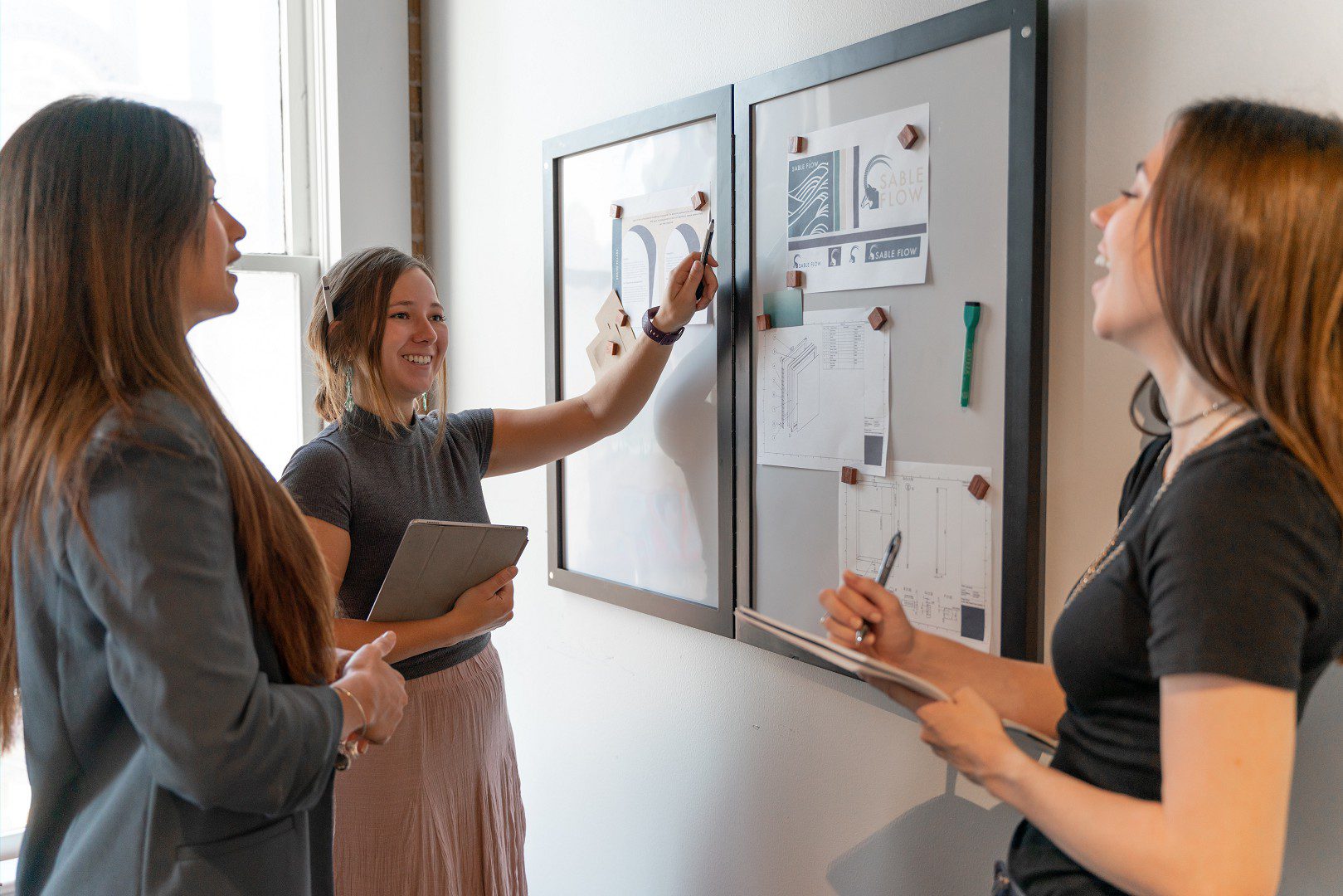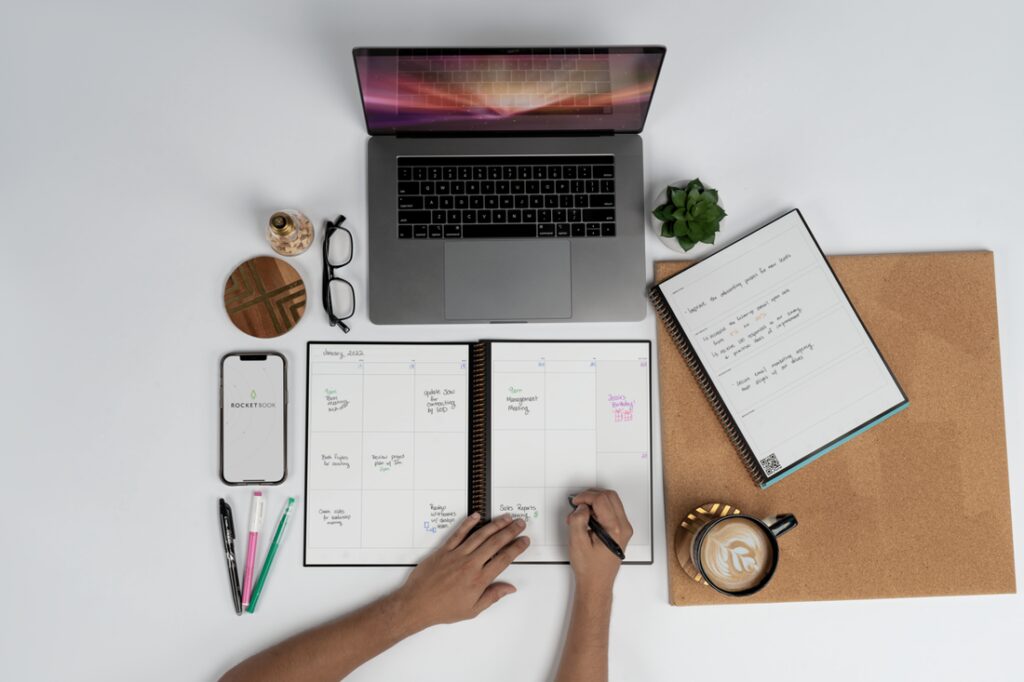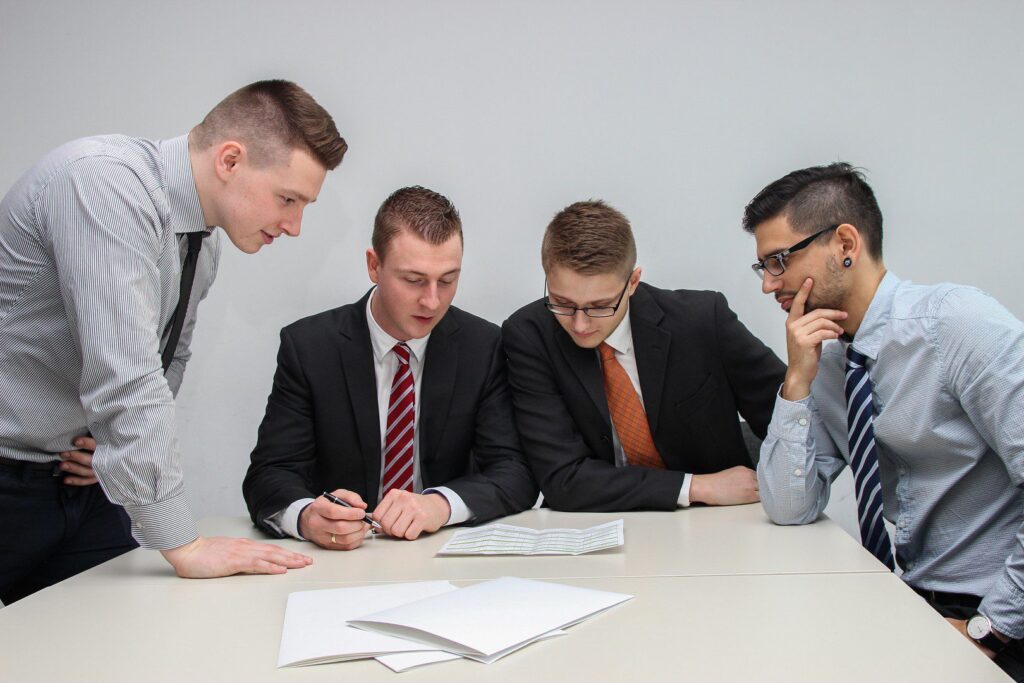Contents
- 1 Mastering the Art of Note-Taking: Essential Techniques for Productive Meetings
- 2 Elevate Your Meeting Efficiency: Proven Strategies for Effective Note-Taking
- 3 Boosting Productivity in Meetings: Expert Tips for Taking Notes like a Pro
- 4 Unleash Your Note-Taking Potential: Practical Techniques for Effective Meeting Summaries
- 5 The Ultimate Guide to Capturing Meeting Insights: Note-Taking Techniques that Work
- 6 Streamline Your Meeting Notes: Innovative Methods for Efficient Note-Taking
- 7 From Chaos to Clarity: Transforming Your Meeting Notes with Effective Techniques
- 8 Note-Taking Mastery: Unlocking the Power of Effective Techniques in Meetings
- 9 Enhancing Meeting Productivity: Unleashing the Potential of Effective Note-Taking
- 10 The Power of Effective Note-Taking Techniques in Meetings: A Game-Changer for Communication
- 11 FAQs About Effective Note-Taking Techniques for Meetings
Mastering the Art of Note-Taking: Essential Techniques for Productive Meetings
Have you ever sat through a meeting, only to leave feeling like you didn’t quite grasp the key points or action items discussed? Or perhaps you find yourself struggling to recall important details from past meetings when you need them the most. If this sounds familiar, fear not! In this article, we will delve into the world of effective note-taking techniques for meetings, equipping you with the skills to capture and retain valuable information.
Meetings can be overwhelming, with a barrage of information being thrown at you from different directions. That’s where effective note-taking comes in. It’s not just about scribbling down every word that is said; it’s about actively listening, synthesizing information, and capturing the essence of the discussion. By doing so, you can transform your meeting experience from a chaotic jumble of thoughts to a clear and concise summary of the key takeaways.
In this comprehensive guide, we will explore a variety of proven strategies and practical techniques to help you elevate your note-taking game. From innovative methods for efficient note-taking to unlocking the power of effective techniques, we’ve got you covered. Whether you’re a seasoned note-taker looking to enhance your skills or a novice just starting out, there’s something here for everyone.
So, if you’re ready to unleash your note-taking potential and maximize your meeting impact, join us on this journey to mastering the art of note-taking. Get ready to transform your meeting notes from disorganized chaos to crystal-clear clarity. Let’s dive in and discover the secrets to effective note-taking techniques for meetings.
Elevate Your Meeting Efficiency: Proven Strategies for Effective Note-Taking
Taking effective notes during meetings is crucial for maximizing productivity and ensuring that important information is captured and retained. By implementing proven strategies for note-taking, you can elevate your meeting efficiency and become a more valuable contributor. In this section, we will explore some key techniques that will help you take better notes during meetings.
1. Come Prepared
Before the meeting starts, make sure you have all the necessary tools at hand. This includes a notebook or laptop for taking notes, pens or pencils, and any relevant documents or materials that will be discussed. Being prepared will enable you to focus on the content of the meeting and take more accurate and detailed notes.
2. Use a Structured Format
Organizing your notes in a structured format will make them easier to review and reference later. Consider using headings, bullet points, and subheadings to categorize different topics or ideas discussed during the meeting. This will help you quickly locate specific information when you need it.
3. Active Listening and Summarizing
Actively listening to the speaker and summarizing key points in your own words is an effective way to reinforce your understanding and retention of the information. Instead of transcribing every word, focus on capturing the main ideas, action items, and decisions made during the meeting. This will prevent you from getting overwhelmed with excessive note-taking and allow you to actively participate in the discussion.
4. Develop Your Own Shorthand
To take notes quickly and efficiently, consider developing your own shorthand system. This can involve using abbreviations, symbols, or specific notations that are easy for you to understand. For example, using symbols like arrows to indicate action items or exclamation marks to highlight important points can help you capture information more efficiently.
5. Review and Revise
After the meeting, take the time to review and revise your notes while the information is still fresh in your mind. Fill in any gaps or clarify any unclear points. This will ensure that your notes are accurate and comprehensive, making them more useful for future reference.
By implementing these proven strategies for effective note-taking, you can elevate your meeting efficiency and become a more valuable contributor. In the next section, we will explore how these techniques can boost overall productivity in meetings.

Boosting Productivity in Meetings: Expert Tips for Taking Notes like a Pro
Are you tired of attending meetings and feeling overwhelmed by the amount of information being discussed? Do you struggle to capture all the important points and action items? If so, it’s time to boost your productivity in meetings with expert tips for taking notes like a pro.
The Importance of Effective Note-Taking
Taking effective notes during meetings is crucial for several reasons. First and foremost, it helps you stay engaged and focused on the discussion. By actively listening and jotting down key points, you are less likely to zone out or miss important information. Additionally, taking notes allows you to refer back to the discussion later on, ensuring that nothing falls through the cracks.
Tips for Taking Notes like a Pro
- Be prepared: Before the meeting, review the agenda and any relevant materials. Familiarize yourself with the topics and objectives to ensure you are ready to take effective notes.
- Use shorthand and symbols: Develop your own shorthand and symbols to quickly jot down information. For example, use arrows to indicate action items, asterisks for important points, and question marks for areas that need clarification.
- Organize your notes: Use headings, subheadings, and bullet points to structure your notes. This helps you easily navigate through the information and find what you need later on.
- Focus on key points: Instead of trying to write down every single word, focus on capturing the main ideas and key takeaways. This allows you to be more present in the meeting and ensures that you are capturing the most important information.
- Ask for clarification: If something is unclear or you need more information, don’t hesitate to ask for clarification during the meeting. It’s better to address any confusion in the moment rather than trying to decipher unclear notes later on.
Boost Your Meeting Productivity Today!
By implementing these expert tips for taking notes like a pro, you can boost your productivity in meetings and ensure that you are capturing all the important information. From being prepared and using shorthand to organizing your notes and focusing on key points, these techniques will help you become a more effective note-taker. In the next section, we will explore practical techniques for creating effective meeting summaries. Stay tuned to unleash your note-taking potential!
Unleash Your Note-Taking Potential: Practical Techniques for Effective Meeting Summaries
Taking effective meeting summaries is a crucial skill that can greatly enhance your productivity and ensure that important information is not lost or forgotten. In this section, we will explore practical techniques that can help you unleash your note-taking potential and create concise yet comprehensive meeting summaries.
1. Listen actively and identify key points
To create an effective meeting summary, it is important to actively listen and identify the key points being discussed. This involves paying attention to the main ideas, decisions, and action items that arise during the meeting. By focusing on these key points, you can ensure that your summary captures the most important information.
2. Use shorthand and abbreviations
During fast-paced meetings, it can be challenging to keep up with the conversation while also taking detailed notes. To overcome this, consider using shorthand and abbreviations to quickly jot down important information. For example, you can use symbols or acronyms to represent commonly used words or phrases. This technique can help you write more efficiently and save time.
3. Structure your summary effectively
A well-structured meeting summary is easier to understand and reference later on. Consider organizing your summary using headings and subheadings to separate different topics or discussion points. Additionally, using bullet points or numbered lists can help break down complex information into concise and digestible chunks.
4. Focus on action items and follow-ups
One of the most important aspects of a meeting summary is capturing action items and follow-ups. Make sure to clearly document any tasks or responsibilities assigned during the meeting, along with their deadlines or next steps. This will ensure that everyone is on the same page and that progress can be tracked effectively.
By implementing these practical techniques for effective meeting summaries, you can unleash your note-taking potential and ensure that important information is captured accurately. In the next section, we will explore the ultimate guide to capturing meeting insights and how note-taking techniques can improve communication and collaboration.

The Ultimate Guide to Capturing Meeting Insights: Note-Taking Techniques that Work
Taking effective notes during meetings is crucial for capturing important insights and ensuring productive communication. In this section, we will explore some proven note-taking techniques that can help you maximize your meeting impact and capture valuable insights.
Active Listening: The Foundation of Effective Note-Taking
Active listening is the key to successful note-taking. By fully engaging in the conversation and focusing on the speaker, you can capture the most relevant information. Here are some techniques to enhance your active listening skills:
- Maintain eye contact with the speaker to show your attentiveness.
- Use non-verbal cues such as nodding or smiling to encourage the speaker.
- Avoid distractions and stay fully present in the meeting.
Structured Note-Taking: Organize Your Thoughts
A well-structured note-taking system can make it easier to review and understand your notes later. Consider using the following techniques:
- Use headings and subheadings: Divide your notes into sections to categorize different topics discussed in the meeting.
- Bullet points and numbering: Use bullet points or numbering to list key points, action items, or decisions made during the meeting.
- Highlighting and underlining: Emphasize important information by using highlighting or underlining techniques.
Abbreviations and Symbols: Save Time and Space
Using abbreviations and symbols can help you take notes more efficiently, saving time and space. Here are some commonly used abbreviations:
- “w/” for “with”
- “b/c” for “because”
- “e.g.” for “for example”
- “&” for “and”
Visual Aids: Enhance Understanding
Incorporating visual aids into your note-taking can enhance your understanding and retention of information. Consider using:
- Diagrams or flowcharts to illustrate processes or relationships.
- Mind maps to connect related ideas and concepts.
- Tables or matrices to compare and contrast different options or perspectives.
By utilizing these effective note-taking techniques, you can capture meeting insights more efficiently and ensure that important information is not lost. In the next section, we will explore innovative methods for streamlining your meeting notes and further enhancing your productivity.
Streamline Your Meeting Notes: Innovative Methods for Efficient Note-Taking
Taking effective notes during meetings is crucial for capturing important information and ensuring productivity. In this section, we will explore innovative methods that can streamline your note-taking process and make it more efficient.
Utilize Technology Tools
Technology has revolutionized the way we take notes, and there are numerous tools available that can enhance your productivity in meetings. Consider using note-taking apps like Evernote or Microsoft OneNote, which allow you to organize your notes digitally and access them from any device. These apps also offer features like voice recording and image capturing, making it easier to capture and reference information accurately.
Create a Structured Template
Having a structured template for your meeting notes can help you stay organized and ensure that you capture all the necessary information. Create a template that includes sections for the meeting agenda, key discussion points, action items, and deadlines. This will make it easier to review your notes later and follow up on any tasks assigned during the meeting.
Use Visual Aids
Visual aids can be powerful tools for enhancing your note-taking process. Consider incorporating diagrams, charts, or mind maps into your notes to visually represent complex information. This not only helps you understand the content better but also makes it easier to recall and communicate the information to others.
Employ Abbreviations and Symbols
To speed up your note-taking process, develop a set of abbreviations and symbols that you can use to represent common words or phrases. For example, you can use an arrow symbol to indicate action items or a star symbol to highlight important points. This will save you time and effort in writing out lengthy words or phrases repeatedly.
Summarize and Reflect
At the end of each meeting, take a few minutes to summarize the key takeaways and reflect on the information discussed. This will help reinforce your understanding and ensure that you have captured the most important points. Additionally, it will serve as a useful reference when reviewing your notes later.
By implementing these innovative methods for efficient note-taking, you can streamline your meeting notes and boost your productivity. In the next section, we will explore how to transform your chaotic meeting notes into clear and concise summaries.

From Chaos to Clarity: Transforming Your Meeting Notes with Effective Techniques
Taking effective notes during meetings can be a challenging task, especially when the discussions are fast-paced and filled with important information. However, with the right techniques, you can transform your chaotic meeting notes into clear and organized records that capture all the essential details. In this section, we will explore some effective techniques that can help you achieve this transformation.
1. Use a structured note-taking format
One of the key elements of effective note-taking is using a structured format that allows you to capture information in a logical and organized manner. Consider using headings and subheadings to categorize different topics discussed during the meeting. This will make it easier for you to locate specific information later on.
2. Employ shorthand and abbreviations
To keep up with the fast pace of meetings, it can be helpful to develop your own set of shorthand and abbreviations. This allows you to jot down key points quickly without sacrificing accuracy. For example, using symbols like arrows or asterisks to indicate important or urgent tasks can help you prioritize your action items later.
3. Highlight key information
During a meeting, there are often moments when important information or decisions are made. To ensure these crucial details don’t get lost in the sea of notes, consider using highlighting techniques. You can use different colors or underline key points to make them stand out. This will make it easier for you to refer back to these important details later on.
4. Summarize and rephrase
Instead of writing down every single word spoken during the meeting, focus on capturing the main ideas and key takeaways. Summarize discussions in your own words to ensure you understand the information correctly. This will not only help you retain the information better but also make your notes more concise and easier to review.
5. Review and organize your notes after the meeting
Once the meeting is over, take some time to review and organize your notes. Fill in any missing details and make sure your notes are complete. Consider creating a separate section for action items or decisions made during the meeting. This will help you stay organized and ensure you don’t miss any important follow-up tasks.
By implementing these effective note-taking techniques, you can transform your meeting notes from chaotic and disorganized to clear and concise records of important discussions. These techniques will not only help you stay organized during the meeting but also make it easier for you to review and reference the information later on. In the next section, we will explore additional strategies to further enhance your note-taking skills and maximize your meeting productivity.
Note-Taking Mastery: Unlocking the Power of Effective Techniques in Meetings
In today’s fast-paced business world, effective note-taking techniques are essential for maximizing productivity and ensuring that valuable insights from meetings are not lost. Heading VIII explores the concept of note-taking mastery and how it can unlock the power of effective techniques in meetings.
The Importance of Note-Taking Mastery
Note-taking mastery involves more than just scribbling down random thoughts and ideas during a meeting. It requires a systematic approach that allows you to capture key information accurately and efficiently. By mastering effective note-taking techniques, you can:
- Stay organized: Taking structured notes helps you keep track of important points, action items, and follow-ups. This ensures that nothing falls through the cracks and allows you to stay on top of your responsibilities.
- Enhance comprehension: Actively taking notes during a meeting helps you engage with the content and understand it better. It forces you to listen attentively, process information, and summarize it in your own words, leading to improved comprehension and retention.
- Facilitate collaboration: Well-crafted meeting notes serve as a valuable resource for sharing information with colleagues who were not present at the meeting. They can be easily distributed, providing a common understanding of what was discussed and enabling collaboration on projects and tasks.
Techniques for Note-Taking Mastery
To unlock the power of effective note-taking techniques in meetings, consider implementing the following strategies:
- Use shorthand and symbols: Develop your own system of shorthand and symbols to capture information quickly. This can include abbreviations, arrows, and other visual cues that help you condense information without sacrificing clarity.
- Create a structured template: Design a note-taking template that suits your needs and provides a consistent structure for organizing information. This could include sections for meeting objectives, key discussion points, action items, and next steps.
- Active listening and summarization: Actively listen to the conversation and summarize key points in your own words. This not only helps you understand the information better but also allows you to capture the essence of the discussion in a concise and meaningful way.
Unlock the Power of Effective Note-Taking Techniques
Note-taking mastery is a valuable skill that can transform your meeting experience. By staying organized, enhancing comprehension, and facilitating collaboration, effective note-taking techniques can significantly boost your productivity and ensure that important insights are not overlooked.
In the next section, we will explore various methods for enhancing meeting productivity by unleashing the potential of effective note-taking. Stay tuned to discover new techniques and strategies that will take your note-taking skills to the next level.

Enhancing Meeting Productivity: Unleashing the Potential of Effective Note-Taking
In today’s fast-paced business environment, meetings play a crucial role in decision-making and collaboration. However, without effective note-taking techniques, valuable insights and action items can easily get lost in the shuffle. Heading IX of our article outline focuses on enhancing meeting productivity through the power of effective note-taking.
The Importance of Effective Note-Taking
Taking thorough and organized notes during meetings is essential for several reasons. Firstly, it helps you capture important information and key points discussed during the meeting. This ensures that you have a reliable record to refer back to, preventing any miscommunication or forgotten details.
Secondly, effective note-taking allows you to actively engage in the meeting and stay focused. By jotting down the main ideas and summarizing discussions, you actively process the information, leading to better understanding and retention.
Techniques for Effective Note-Taking
- Use a structured template: Create a note-taking template that includes sections for meeting objectives, agenda items, key discussion points, action items, and deadlines. This provides a clear structure for your notes and makes it easier to review and follow up on action items.
- Employ shorthand and abbreviations: Develop your own set of shorthand symbols and abbreviations to speed up your note-taking process. For example, use arrows to indicate action items, asterisks for important points, and abbreviations for commonly used terms.
- Focus on key takeaways: Instead of trying to capture every single detail, focus on capturing the main ideas, decisions, and action items. This allows you to create concise and actionable summaries that are easier to review and share with others.
Leveraging Technology for Effective Note-Taking
In today’s digital age, there are numerous tools and apps available to enhance your note-taking experience. Consider using note-taking apps like Evernote or Microsoft OneNote, which allow you to organize and search your notes effortlessly. Additionally, using a tablet or laptop during meetings can enable you to type faster and create more organized notes.
By implementing these effective note-taking techniques, you can enhance meeting productivity and ensure that valuable insights and action items are not lost. In the next section, we will explore how mastering these techniques can maximize the impact of your meetings.
- Effective note-taking ensures important information is captured accurately.
- Structured templates provide a clear framework for note-taking.
- Shorthand and abbreviations speed up the note-taking process.
- Focusing on key takeaways helps create concise and actionable summaries.
- Leveraging technology and digital tools can enhance note-taking efficiency.
The Power of Effective Note-Taking Techniques in Meetings: A Game-Changer for Communication
Effective note-taking techniques can truly transform the way we communicate and collaborate in meetings. By mastering the art of note-taking, we can capture important insights, stay organized, and boost productivity. In this article, we have explored various strategies and techniques to help you become a note-taking pro. Let’s recap some of the key takeaways:
1. Be Prepared
- Before the meeting, familiarize yourself with the agenda and any relevant materials.
- Have your note-taking tools ready, whether it’s pen and paper or a digital note-taking app.
2. Stay Focused and Engaged
- Actively listen and engage in the discussion to capture the most important points.
- Use abbreviations, symbols, and shorthand to speed up your note-taking process.
3. Structure Your Notes
- Use headings, subheadings, and bullet points to organize your notes.
- Highlight key ideas, action items, and follow-up tasks for easy reference.
4. Utilize Technology
- Explore digital note-taking tools that offer features like search, tagging, and synchronization across devices.
- Consider using templates or pre-designed note-taking layouts to save time and ensure consistency.
5. Review and Summarize
- Take a few minutes after the meeting to review and clarify your notes.
- Summarize the main points and action items in a concise and easily understandable format.
- Share your meeting notes with colleagues to foster collaboration and ensure everyone is on the same page.
- Encourage feedback and input from others to enhance the accuracy and completeness of your notes.
By implementing these effective note-taking techniques, you can elevate your meeting efficiency, boost productivity, and enhance communication. Remember, note-taking is not just about capturing information; it’s about actively engaging in the meeting and extracting valuable insights. So, start implementing these strategies, and unleash the power of effective note-taking in your meetings today!
FAQs About Effective Note-Taking Techniques for Meetings
How can I improve my note-taking skills in meetings?
To improve your note-taking skills in meetings, try using a structured format, such as creating headings, bullet points, and subheadings. This will help you organize your notes and make them easier to review later. Additionally, actively listening and summarizing key points instead of transcribing everything will allow you to focus on the most important information.
What are some effective techniques for taking notes during meetings?
Some effective techniques for taking notes during meetings include using abbreviations and symbols to save time, using color coding to highlight important information, and using mind maps or diagrams to visually represent connections between ideas. Experiment with different techniques to find what works best for you.
How can I ensure I capture all the important details during a meeting?
To ensure you capture all the important details during a meeting, it’s helpful to come prepared with a template or outline that includes the main topics or agenda items. This will serve as a guide and help you stay focused on the key points. Additionally, don’t hesitate to ask for clarification or repeat information if needed.
What should I do with my meeting notes after the meeting is over?
After the meeting is over, it’s important to review and organize your notes while the information is still fresh in your mind. Consider creating a summary or action plan based on your notes, and share it with the relevant stakeholders. This will help ensure that the information discussed in the meeting is effectively communicated and followed up on.

0 Comments